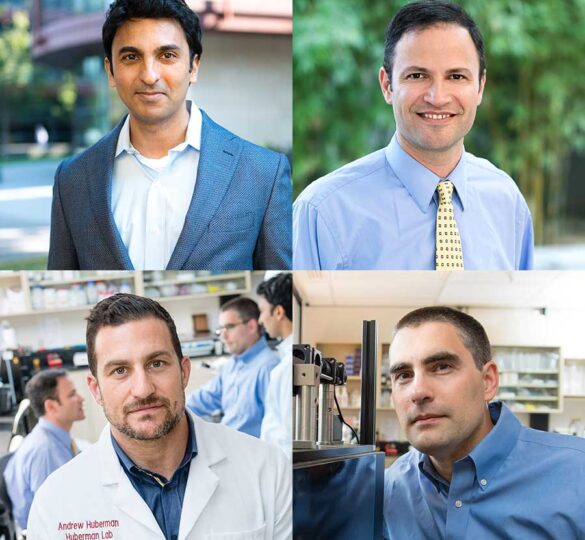Catalyst for a Cure: Glaucoma Biomarker to Be Tested
The Catalyst for a Cure (CFC) Biomarker Initiative brings together four research laboratories to find new and sensitive measures for glaucoma.

The tools doctors have now to diagnose and manage glaucoma—including measuring eye pressure and visual field tests—can be effective, but glaucoma cannot be defined by measuring eye pressure alone.
At Glaucoma Research Foundation, we believe it is critical for new tools to be developed tools that will enable eye doctors to detect glaucoma at its earliest stages, and to help determine which glaucoma patients are most at risk for irreversible vision loss.
The Catalyst for a Cure team has identified eight possible new biomarkers for glaucoma. Thanks to the team’s expertise in neurobiology and optical engineering, they have been designing and building specialized equipment that provides images of the earliest changes in the eye. Their focus is the retina, the thin tissue in the back of the eye containing photoreceptor nerve cells. These nerve cells, known as retinal ganglion cells (RGCs), use electrical impulses to send visual information entering the eye through the optic nerve to the brain where images are perceived.
Measuring Cellular Changes
The health and evaluation of the RGCs are fundamental to glaucoma because as these cells degenerate and die, vision is lost. Through their investigations, the CFC researchers have been able to identify which specific types of RGCs are injured or die first in glaucoma. They are now developing techniques to measure this critical cell change.
The Catalyst for a Cure researchers are also looking at the role of the mitochondria in RGCs. Mitochondria produce energy for the cell and if they are damaged or not working correctly, it can result in the damage and eventual death of RGCs. By developing specialized imaging equipment, the researchers are able to observe and measure the changes to the mitochondria. This information can be used to intervene to ensure the health of the RGC and thus preserve vision.
Blood flow and the measurement of oxygen in the retina may also play a significant role in the health of RGCs. Novel imaging equipment is being built in the lab to allow the researchers to detect these biological changes in patients.
Over the next several years, the CFC laboratories will continue to test and validate their findings with the goal of developing new methods for doctors to diagnose and evaluate glaucoma. This important work promises to transform glaucoma care and preserve vision for countless patients around the world.
First posted November 12, 2015; Last reviewed June 22, 2022